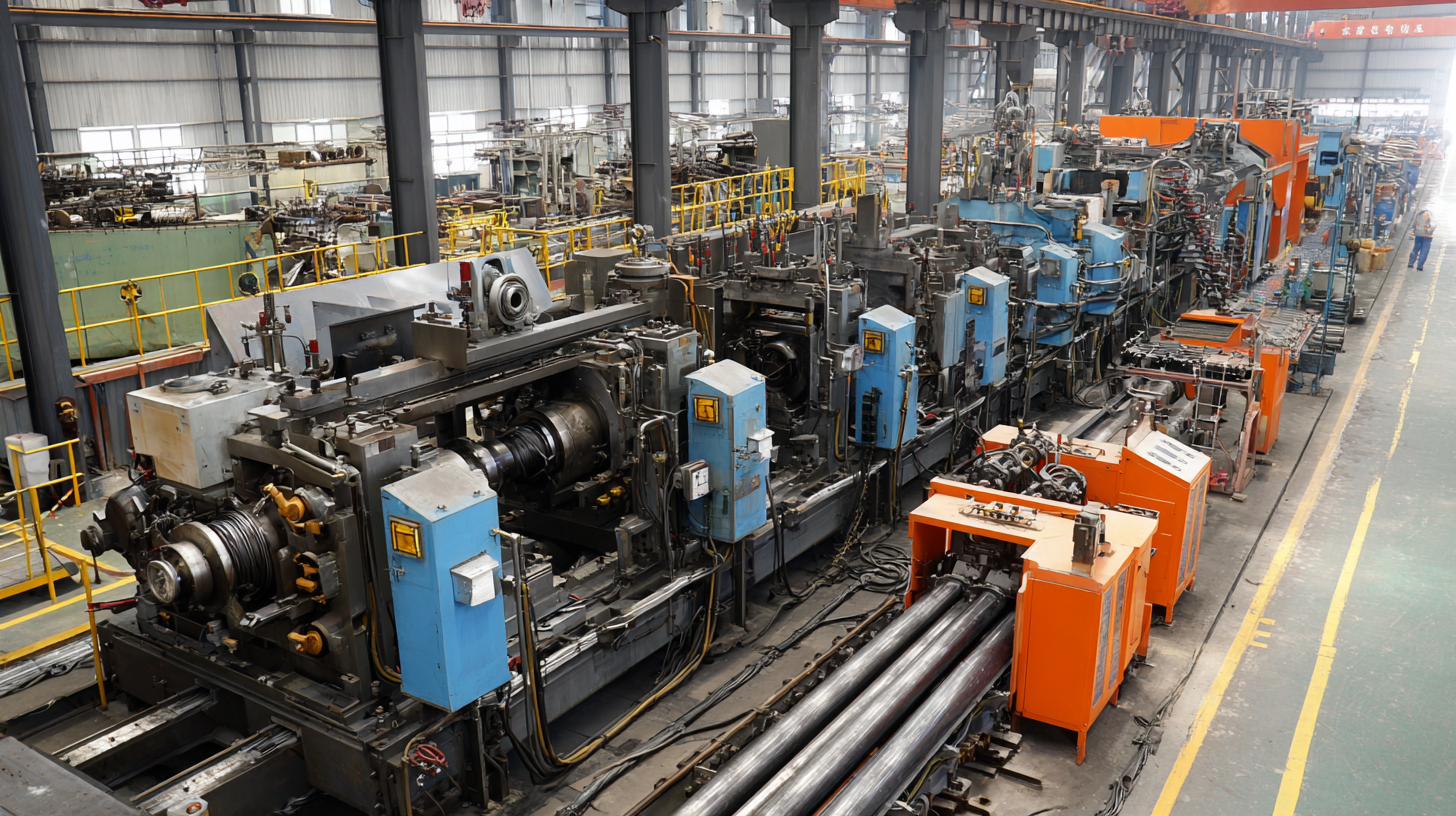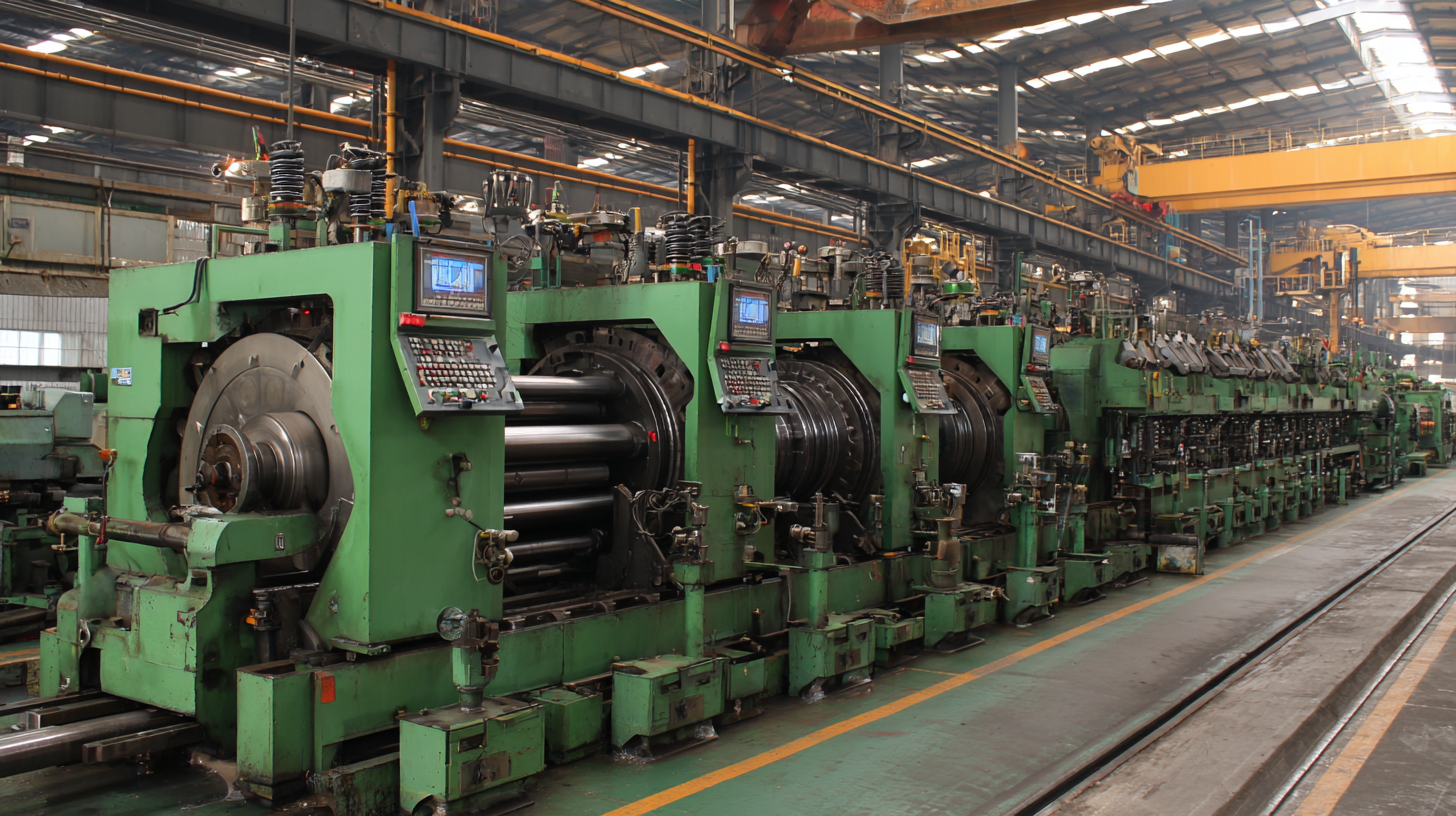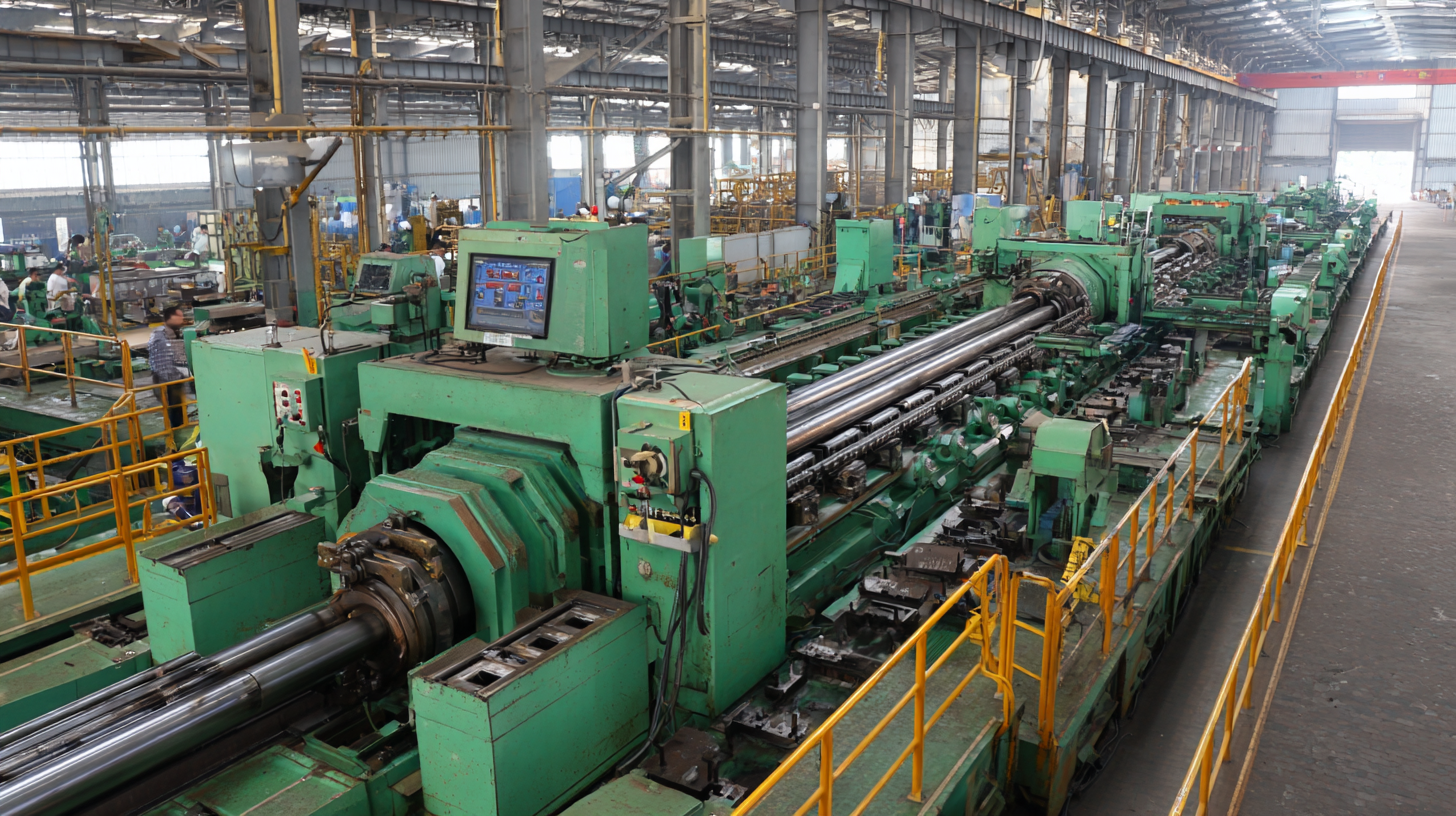
In today's competitive manufacturing landscape, optimizing production efficiency in carbon steel tube mill processes is paramount for success. According to a recent industry report by the American Iron and Steel Institute, productivity improvements in steel manufacturing can lead to reductions in operational costs by as much as 15%. As industries continue to push for sustainability and cost-effectiveness, the integration of advanced technologies in Carbon Steel Tube Mill Pipe Making Machine operations is increasingly essential. Strategies that enhance throughput and minimize downtime not only boost profitability but also align with the growing demand for high-quality steel products. Therefore, this blog will outline key strategies designed to optimize your tube mill pipe production efficiency, ensuring that your operations remain at the forefront of industry standards while capitalizing on growth opportunities.

To evaluate the efficiency of your carbon steel tube mill production process, you must focus on key performance metrics that highlight both productivity and quality. First, consider the overall equipment effectiveness (OEE), which combines machine availability, performance, and quality rates to give you a comprehensive understanding of your production capability. Regularly monitoring OEE can reveal bottlenecks and areas requiring improvement, leading to better resource utilization.
Another critical metric is the yield percentage, which measures the ratio of usable product to total output. A high yield percentage indicates minimal waste and effective production processes. Implementing lean manufacturing techniques can significantly enhance this metric by identifying and eliminating non-value-added activities.
Tips: Always track downtime causes; categorizing them can lead to targeted strategies for reduction. Additionally, embrace real-time data monitoring to make informed decisions quickly, allowing for proactive adjustments in the production line. Regular training for operators on best practices can also significantly contribute to maintaining high efficiency levels.

In the rapidly evolving manufacturing landscape, innovative technologies play a crucial role in transforming carbon steel tube mill operations. Automation and data analytics are at the forefront, driving significant improvements in production efficiency. According to a recent report by MarketsandMarkets, the global industrial automation market is expected to grow from $175 billion in 2020 to $310 billion by 2026, showcasing a compound annual growth rate (CAGR) of 9.2%. This increasing adoption of automation technologies allows tube mills to optimize processes, reduce waste, and enhance product quality.
Furthermore, the integration of IoT (Internet of Things) technologies provides mills with real-time data insights, enabling proactive decision-making. A study conducted by McKinsey indicates that leveraging IoT in manufacturing can improve operational efficiency by up to 20%. By monitoring equipment performance and detecting anomalies early, mills can reduce downtime and improve throughput, ultimately leading to a more streamlined and cost-effective production process. As these innovative technologies continue to evolve, the carbon steel tube mill industry stands on the brink of a revolution, promising increased competitiveness and sustainability.
In the competitive landscape of carbon steel tube mill pipe production, reducing waste and enhancing yield are paramount for operational efficiency. Effective waste management strategies can lead to significant cost savings and a more sustainable production cycle. Recent data suggest that optimizing production processes can reduce waste by up to 30%, providing manufacturers with a sound economic rationale for investing in more efficient technologies.
One of the best practices for improving yield in pipe production is the implementation of advanced monitoring systems. These systems allow for real-time analysis and adjustments during the manufacturing process, minimizing deviations and scrap. Additionally, engaging in regular training sessions for staff on lean manufacturing techniques can foster a culture of efficiency, ensuring that all team members are aligned with the company's waste reduction goals.
**Tip:** Consider investing in automated quality control measures that can identify defects earlier in the production chain. This not only reduces waste but also enhances the consistency of the final product. Furthermore, collaborating with suppliers for better material logistics can streamline operations and further decrease production waste, driving both sustainability and profitability.

In the competitive landscape of tube mill manufacturing, employee training is pivotal to enhancing productivity. A study by the American Society for Quality found that organizations with robust training programs can experience up to a 24% increase in productivity. This is particularly important in carbon steel tube mills, where precision and efficiency are paramount. Implementing comprehensive training modules that focus on machine operation, safety protocols, and quality control can significantly reduce operational errors and downtime.
Furthermore, investing in hands-on training sessions for employees can lead to improved technical skills and a deeper understanding of production processes. According to a report by the National Association of Manufacturers, 77% of manufacturers identify the skills gap as a significant challenge. By addressing this gap through targeted training initiatives, tube mills can not only boost efficiency but also foster a more engaged and capable workforce. Additionally, companies that focus on continuous professional development report higher employee retention rates, which further stabilizes production and reduces the costs associated with turnover and hiring.
In recent years, optimizing carbon steel pipe production has gained significant attention, particularly as industries aim to enhance efficiency and sustainability. According to a report by the International Energy Agency, carbon steel production generates approximately 1.85 billion tons of CO2 annually, underscoring the need for improved manufacturing practices. Companies that adopt innovative strategies, such as integrating advanced automation and predictive maintenance, can reduce operational downtime and energy consumption, leading to substantial cost savings and environmental benefits.
One noteworthy case study comes from a leading manufacturer that implemented a real-time monitoring system, resulting in a 15% increase in production efficiency. By utilizing data analytics to track machine performance and maintenance needs, the facility not only optimized its workflow but also minimized waste generation, aligning with global sustainability goals. Such initiatives reflect the ongoing commitment within the industry to foster responsible manufacturing practices while improving profitability. As seen in recent environmentally-focused events in regions like Tianjin, the drive for greener production processes is more critical than ever, pushing manufacturers to innovate and refine their methodologies.
| Strategy | Implementation Time (Months) | Cost Savings (%) | Increase in Production Efficiency (%) | Key Benefits |
|---|---|---|---|---|
| Process Automation | 6 | 15 | 25 | Reduced manual labor, Increased throughput |
| Lean Manufacturing | 12 | 20 | 30 | Minimized waste, Streamlined processes |
| Employee Training | 3 | 10 | 15 | Enhanced skills, Improved safety |
| Equipment Upgrades | 18 | 25 | 40 | Higher production rates, Improved product quality |
| Quality Control Systems | 4 | 15 | 20 | Reduced defects, Enhanced customer satisfaction |
